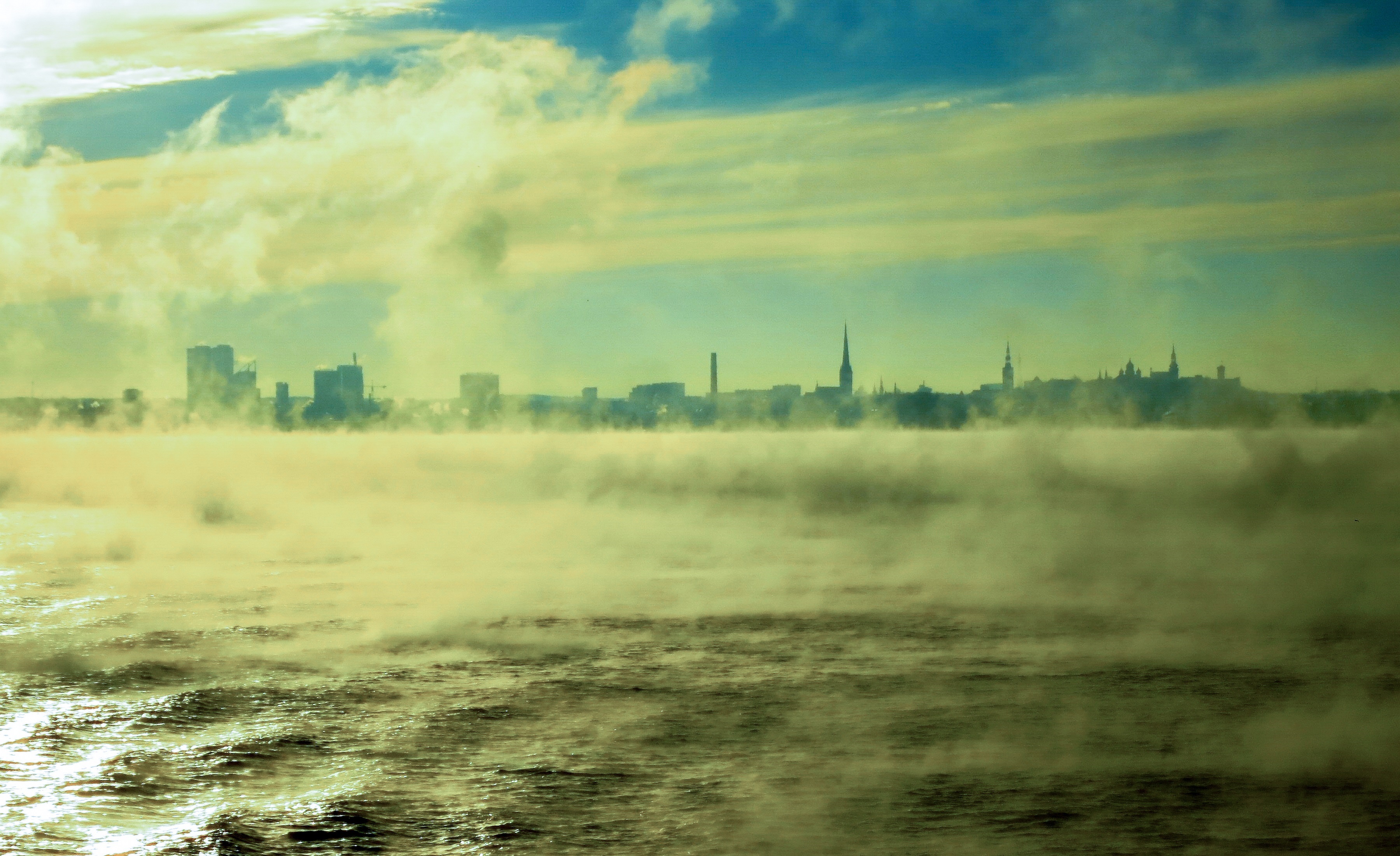House of Gossip is an open-source downloadable game (developed by the Stadtlabor for Multimodal Anthropology of the HU Berlin) that stages and creates the grounds for reflection on conflicts regarding housing and the different viewpoints in a volatile real estate market.
A first prototype of the game was developed – in collaboration with colleagues at the Zentrum für Kunst und Urbanistik (ZK/U) – in a hackathon together with MA students of the Studienprojekt “The only game in town? Anthropology and the housing markets in Berlin” (2018-2019) at the Institut für Europäische Ethnologie (HU Berlin), and showcased in the “Open Form neu denken” exhibition (organized by Z/KU at the Werkstatt of Haus der Statistik in October 25–27 2019). In the last two years we’ve been working on creating a downloadable and playable version of it.
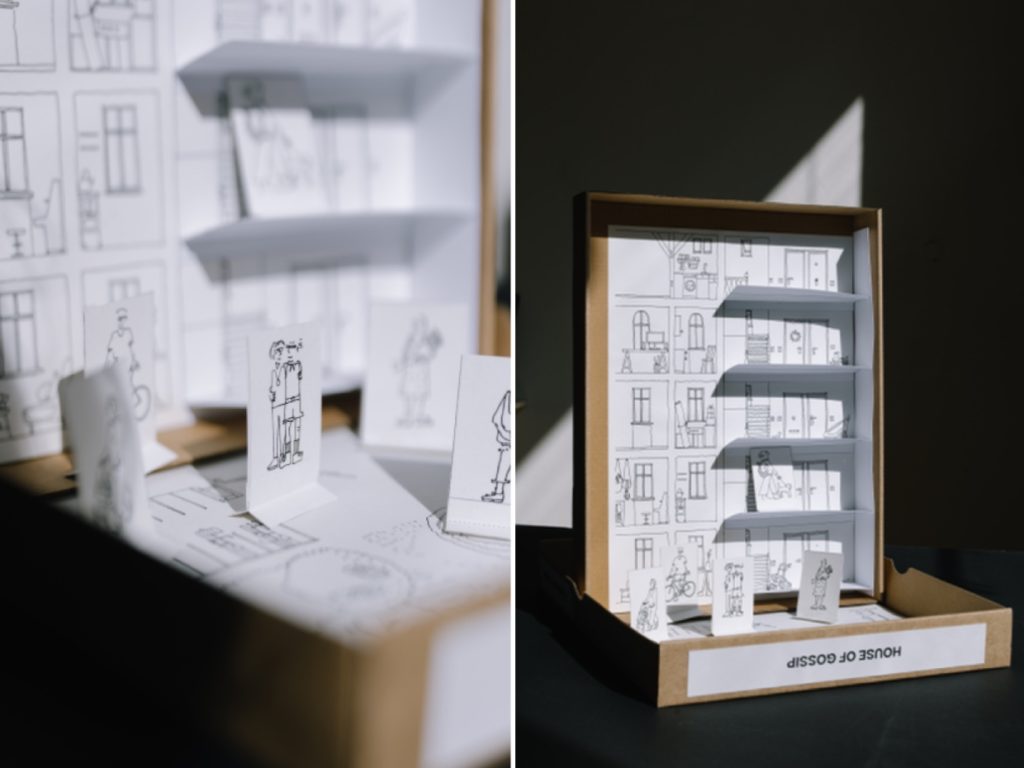
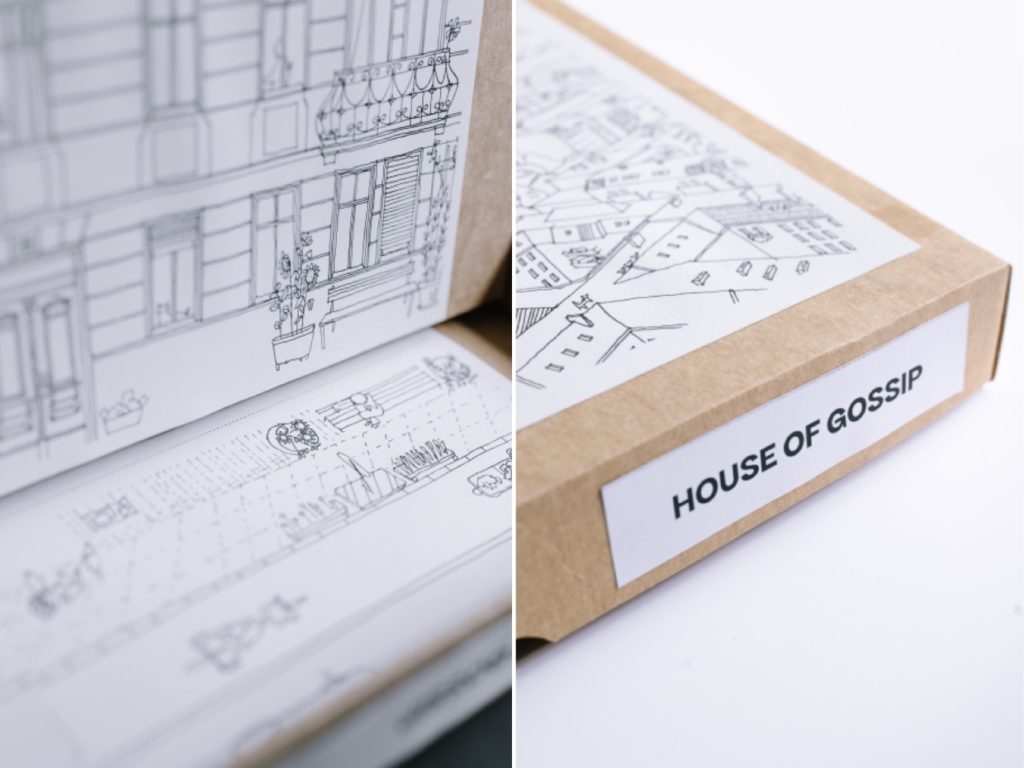
Credits
Game concept (in alphabetical order): Tomás Criado, Ignacio Farías, Lena Heiss, Marie Aline Klinger, Lilian Krischer, Leonie Schipke & Tan Weigand.
Game art by Vasylysa Shchogoleva
CC BY NC SA 2021 Stadtlabor for Multimodal Anthropology, HU Berlin
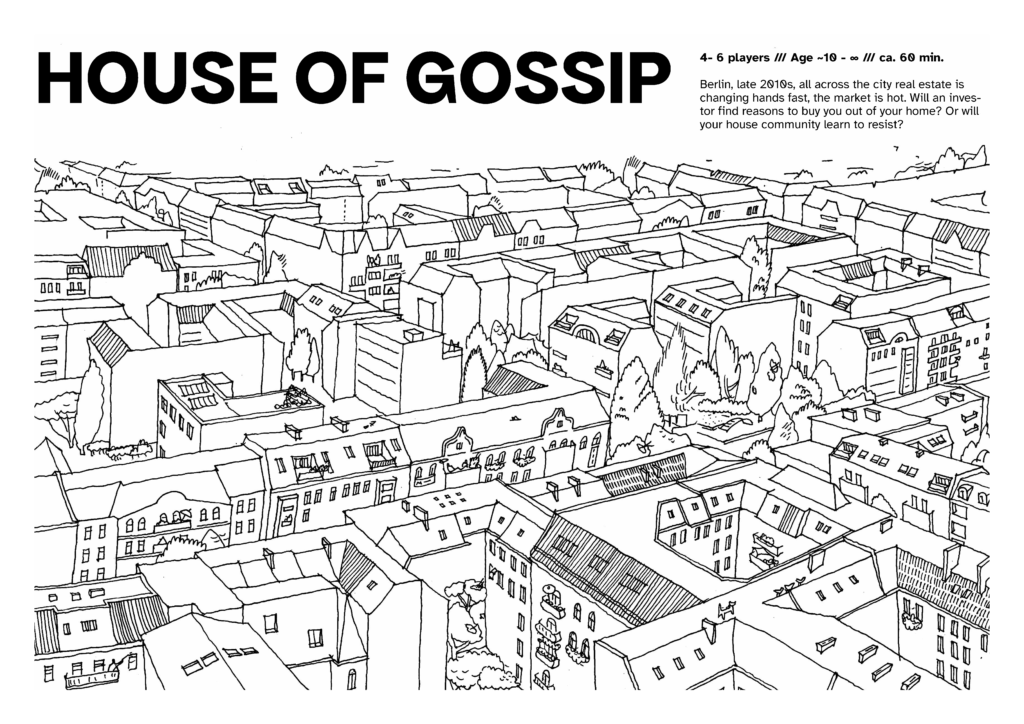
Context
Berlin, late 2010s, all across the city real estate is changing hands fast, the market is hot and many are investing, houses are revaluing. As it tends to happen, this situation has at least two different sides:
Scene 1
– “What about this building? Might you have found a good opportunity here?”
– “It indeed looks nice, but have we explored if it’s in good condition?”
– “The architect sent me this report, look, all clear.” – “It certainly looks promising.”
– “It’s time to act fast.”
– “Ok, yes, let’s go for this house!”
Scene 2
– “Hi, how was your day?”
– “Nothing special, yours?”
– “I heard rumours, two neighbours speaking in the corridor: the building is finally going to be bought!” – “Yes, there was a letter in the mail, look”.
– “But… What will happen to us? Will we have to move if they raise the rent?”
– “We have to do something…”
– “But we know nearly no one in the house.”
“When an apartment building is to be sold, every single alarm bell sets off for the residents. In view of the horrendous purchase prices, there is a danger of being displaced by higher rents or even conversion into condominiums.”
Rationale
House of Gossip is an open-source downloadable game that stages and creates the grounds for reflection on conflicts regarding housing and the different viewpoints in a volatile real estate market. In the game, you will have the opportunity to play either as a resident of the house or as a covert buyer, acting as one of the house’s residents.
In a process where no one can be certain about anything, gossip abounds: In the game you will have to gather information form alliances and find your way to save (as residents) or buy (as the buyer) the house! Think twice about who and when you want to share your information with!
During the course of the game you will repeatedly encounter your neighbours in the stairway to exchange gossip. Your main goal is not just to understand to whom you’re talking to, but also to perform in front of others and form alliances for one of the two competing purposes of the game: Buying or saving the house.
Those who manage to gather the necessary gossips will in the end win the game. Will the house community manage to resist or could the buyer succeed in acquiring the new property?
Download links
The games files can be downloaded here below
Assembly instructions
In order to build your own House of Gossip board game, you will need the following:
● Box A4 size or 23.5 x 31.5 x 3.7 cm
● Paper cutting knife
● Paper cutting board
● Ruler
● Glue suitable for paper and cupboard
● Printing paper (170 g/m2 and 200g/m2 or higher, eco-paper is advised)
● Ink jet or laser printer filled with black ink
- Download the necessary game parts:
● Game Instructions
● Playing Cards
● Board/Box and Tokens - Print out the downloaded parts. You can print all part on the 170 g/m2 or higher eco paper, unless other is stated:
○ Game Instructions
It is an A4 double-sided print. Fold it in three parts, following the dashed lines markings at the top and bottom of the paper.

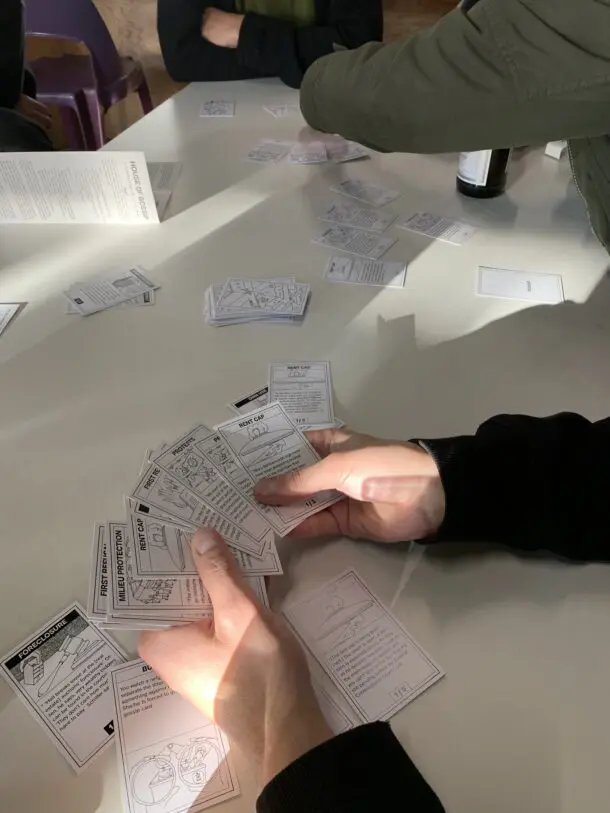
○ Playing Cards
It is an A4 double-sided print. Advised paper thickness for this element is 350 g/m2, but if you don’t have such paper, use the 170 g/m2 or higher eco paper.
Cut the cards following the black markings on the sheet. In the end, you must have cards that are 59 x 92 mm big.
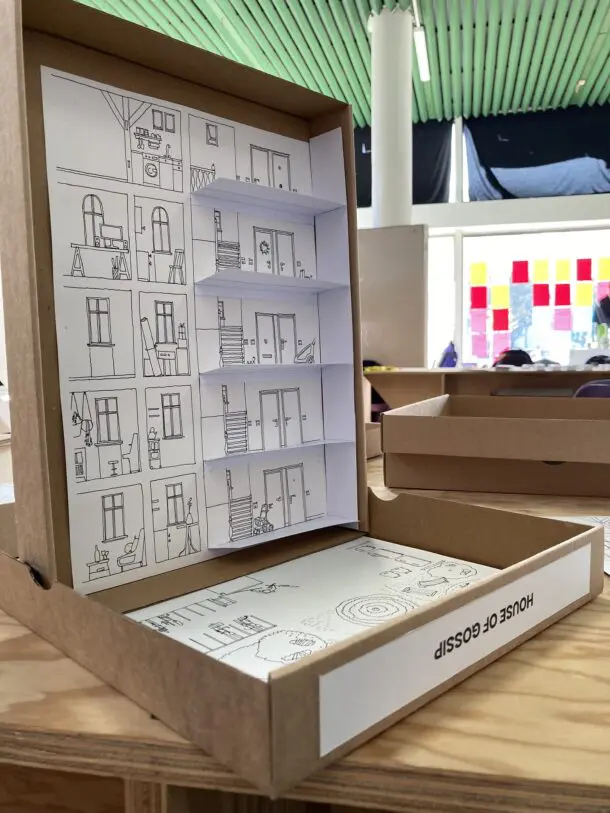
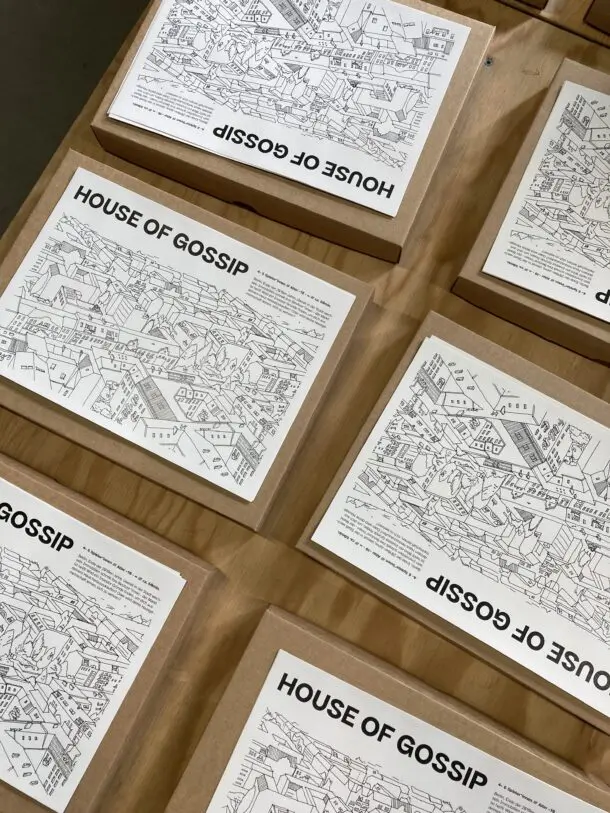
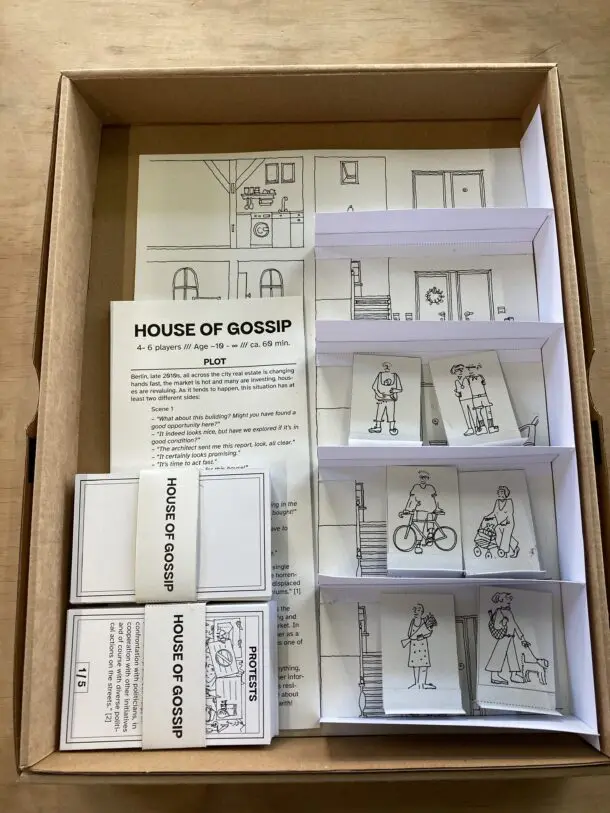
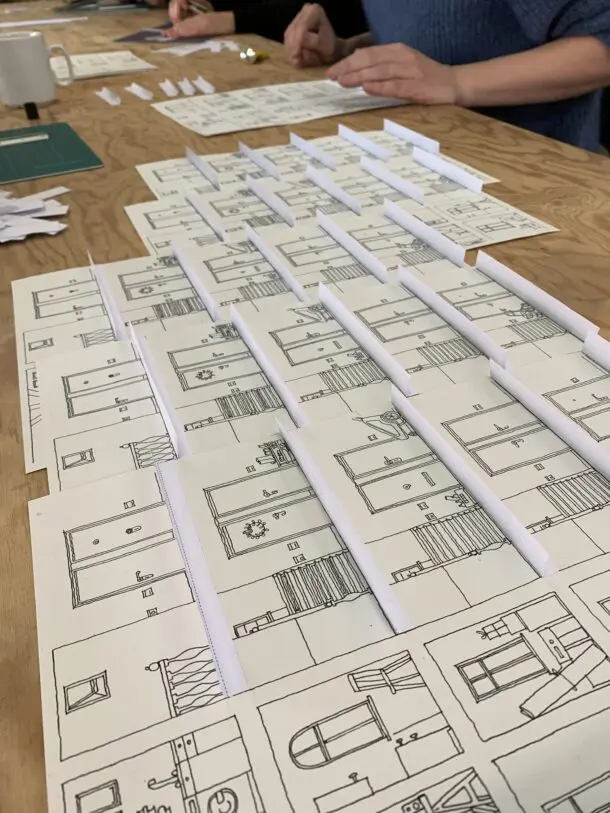
○ Board/Box and Tokens
It is an A4 one-sided print. All the prints, except the file called “HoG_Staircase-Cutout_A4_ENG.pdf” can be printed on the 170 g/m2 or higher eco paper. The file “HoG_Staircase-Cutout_A4_ENG.pdf” should be printed on 200/220 g/m2 or higher eco paper. This will ensure the stability and longevity of the board. After all the parts are printed, do the following:
A. Glue the “HoG_Box-Top_A4_ENG.pdf” file on the top of your box. You can adjust it in the middle if the box is bigger than A4.
B. Glue the “HoG_Box-Top-Inside_A4_ENG.pdf” file on the inner side of the top part of the box.
C. Glue the “HoG_Box-Back_A4_ENG.pdf” file on the outer back part of the box.
D. The files “.pdf” and “.pdf” need to be cut out following the black lines markings, while the dashed line markings are for folding (in order to have an easier folding, you can first use the paper cutter and applying not full, but medium pressure, prepare the paper for folding). For the more detailing step-by-step instruction on the staircase assembly, following the pictures (video, in case applicable).


